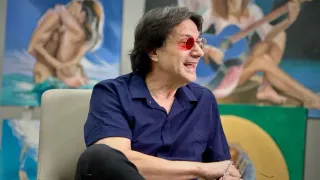July 21, 2023
Jaguars Associate Strength Coach Kevin Maxen Comes Out as Gay in a First for US-Based Pro Leagues
READ TIME: 1 MIN.
Kevin Maxen, an associate strength coach with the Jacksonville Jaguars, has become the first male coach in a major U.S.-based professional league to come out as gay.
Maxen spoke about his sexual orientation in an interview published Thursday by Outsports.
"I don't want to feel like I have to think about it anymore," Maxen said. "I don't want to feel like I have to lie about who I am seeing, or why I am living with someone else.
"I want to be vocal in support of people living how they want to live, but I also want to just live and not feel fear about how people will react."
While Maxen's announcement is a first for a male coach, NFL players have come out previously. Michael Sam became the first openly gay player to be drafted when the then-St. Louis Rams selected him in 2014. In 2021, Carl Nassib, then with the Las Vegas Raiders, became the first active NFL player to come out publicly. Nassib played for Tampa Bay last season.
A few female coaches in U.S.-based leagues have come out publicly, including Katie Sowers, a former assistant with the San Francisco 49ers.
Maxen said he no longer felt comfortable hiding his sexuality or his boyfriend of two years.
"You have other coaches who have significant others, and they're talking about their significant others," Maxen said. "And I felt guilty that I couldn't do the same thing, that I was letting myself down."






